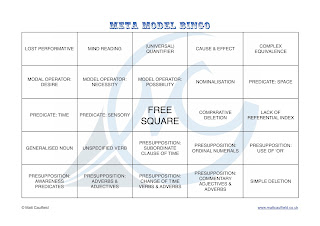Religion is inevitable: it cannot be avoided. Even an atheist has a
creed: Belief that there is ‘no God’ itself is a dogma. Every human strives for
a purpose. Inherent is that, is a compulsion to have beliefs. Unfortunately, as
each one seeks to discover and realize truth, ‘shortcuts’ by way of
explanations are provided by others: priests, community, etc.
Religion cannot be defined, it is but an experience. Like our
sensory organs it cannot be described as how can an experience be explained. It
can only be felt. What is experienced is real, what is explained is but a mere tautology.
We live in an unreal world what is described as maya. It is
illusionary. Running away from maya or an illusion is stupid. That is escapism.
Being in the world, but aware one is not of the world is a realization. Having
clarity makes the illusion disappear. Truth is, it is the essence of being
alive. Truth is not out there. Truth is your innermost immortal reality. The
rope that looks like a snake is always there. There is and had always been the
rope. The snake is but 'illusionary' a false representation in your mind. Your
mind is the illusion itself. The search is itself False. There is no need for a
search. No destination. You are already there. You just have to realize that
all that you seek is already there. You have to grasp innocence. No place for
being cunning or clever. Only the innocent will enter the kingdom of heaven
said Jesus. No need for definition. Just the experience.
Questions that come from innocence gets answered. Springing from
knowledge the question is front loaded with a pet answer. Then no other
response is satisfactory except the answer you already have. Then one question
is followed by another. As long as there is doubt there will always be a
question. When the questions drop, truth emerges.
As knowledge grows understanding reduces. But what is this in
practical terms. Can we allow ourselves to drop knowledge? Would we be taken
advantage of? Substitute your life with trust. When trust exists nothing can be
taken away from you. All principles are no principles. There are not real but
clever arrangements. Like plastic flowers. No thorns, no fragrance,a false
eternity, always fresh. That's what principles are. Spiritual perceptions
render all principles void. Do not get confined by any guess work. Unless
something is your own experience it's not worth keeping it. Drop all the
luggage that comes from knowing. Retain only that which comes from your
understanding. Avoid accumulating garbage. Be careful, you do not substitute
one false belief with another. That’s what we do all the time.
Sit for five minutes and write every thought that goes on inside
your mind. Zillion of thoughts. Remember the thoughts are not interested in
you. Like clouds they float around. And they will continue to float. It is but
you who is invested. It is you that give your thoughts energy. We chase
our possessions, our thoughts. We are the ones who protect it. Keep it reined
it. Drop the interest. Drop the attachment. Cut the rope. Allow the rubbish to
go. Let it wander off: the cloud will wander away from you. Be alive to your
spiritual perception. Everything is always here now. Why be in a hurry. Be
still. Be silent. Be unhurried. Drop goals. Be here now. Everything that
happens happens now and here.
Avoid trying. You are already it. No need to attain. You have
already attained. Just drop the debris that surrounds you. All that is needed
is a permission from you to yourself to become enlightened said Maharishi
Ramana.
The bible says, Seek(within) and you shall find. Knock(within) and
the door shall be opened.
Krishna says,' to die in one's self nature is all'. To think of
following someone else is very frightening. In essence, be yourself.
When the pilgrimage stops: there it is. When the seeker disappears,
it is found. Not by seeking, but by avoiding the search itself. The benediction
is there when all efforts stop. Be alert to oneself. You can't get at it, you
can't get rid of it, there it is. No methods nor paths needed. The gateless
gate. Like light, the darkness melts. The darkness itself gives way to light.
The absence of light is darkness. And the presence of light avoids darkness.
That which is sought by the seeker, will continue to be darkness. When the
seeker does not exist, that which is sought ceases. Then that which exists is.
Avoid being on a journey. One small technique: watch your breath.
You will come back to being here now.
Leo Tolstoy wrote a beautiful story about three most important
questions:
1. what is
the most important time?
2. Who is
the most important person?
3. What is
the most important thing to do?
Through a powerful story he conveys the message: the best time is
always NOW, the most important person is always YOU ( the other) and the most
important task is to DO GOOD.










